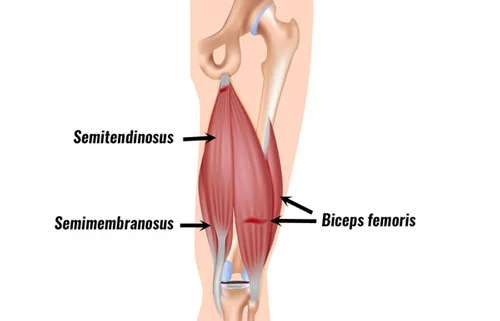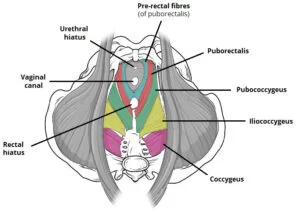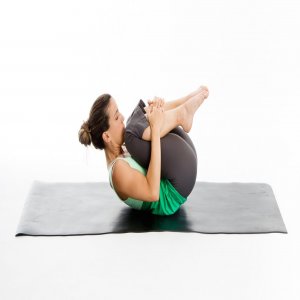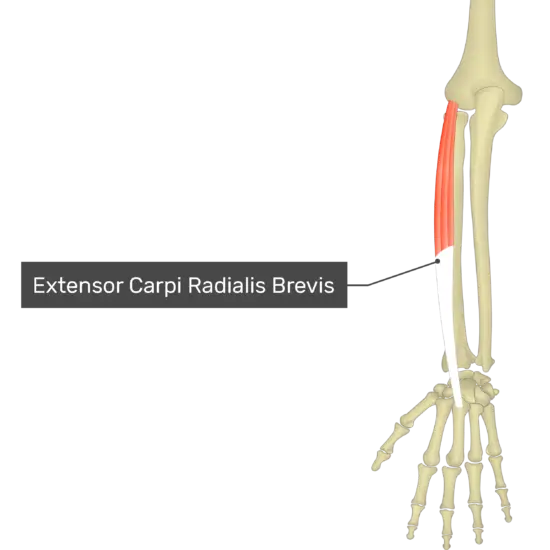Rehabilitation Exercises For Torn Hamstring
Introduction
A torn hamstring is a common sports injury that can cause pain, swelling, and limited mobility in the back of the thigh. Whether you’re an athlete looking to return to your sport or simply seeking relief from the discomfort, rehabilitation exercises play a crucial role in the recovery process.
These exercises are designed to strengthen the injured muscle, improve flexibility, and promote healing while reducing the risk of re-injury.
In this guide, we will explore a range of rehabilitation exercises tailored to help you regain strength and function in your hamstring following a tear. However, it’s essential to consult with a healthcare professional or physical therapist before starting any exercise program to ensure it’s appropriate for your specific condition and stage of recovery.
Proper guidance and a structured rehabilitation plan can significantly contribute to a successful recovery from a torn hamstring injury.
What is a torn hamstring?
A quick, hard contraction or a forceful stretch of the hamstring muscle group, which results in significant mechanical stress, are the two main causes of hamstring strains. The musculotendinous unit’s fibers tear to varied degrees as a result.
In dynamic sports like sprinting, and leaping, and contact sports like Australian Rules football (AFL), American football, and soccer where fast eccentric contractions are prominent, hamstring strains are common. In football, it is the most seen and typical injury. Recreational activities like water skiing and bull riding, when the knee is forcibly stretched during injury, can also result in hamstring injuries.
The hamstrings consist of three muscles :
- The biceps femoris
- The semitendinosus
- The semimembranosus.
Epidemiology/Causes
A hamstring muscle strain frequently has an unexplained reason. The hamstrings are at their longest during the second part of the swing phase, when they also produce the most stress. Hamstrings contract eccentrically during this phase to slow hip flexion and lower leg extension.
The activity of the muscle spindles in the hamstrings reaches a peak at this time. It is necessary to squeeze the hamstring tightly and relax the quadriceps. “Klafs and Arnheim” claim that a breakdown in the communication between these antagonistic muscles might result in hamstring tears. The biceps femoris experiences the most muscle-tendon stretching during high-speed running, which may explain why it tends to sustain injuries more frequently than the other two hamstring muscles (semimembranosus and semitendinosus).
Hamstring injury recovery
Sports injuries of this nature often involve hamstring strains.
When a muscle is overworked or strained, a strain occurs. The three strain categories are grades 1, 2, and 3.
- Grade I: The muscle recovers fast with little structural disturbance.
- Grade II: A partial rupture is present.
- Grade III: Complete tissue rupture with an extended healing process.
- A doctor can determine the kind and extent of the injury and recommend the best recovery strategy. Depending on the severity of the damage, surgery can be required.
The RICE approach can be useful for the majority of sports-related injuries. This entails:
- Rest: Interrupt your activity. Crutches may be advised by a physician.
- Ice: Apply ice packs at intervals of 20 minutes, but avoid putting them on the skin.
- Use an elastic compression bandage for compression.
- Elevation: Lie back and elevate your leg above your heart.
- Cryotherapy has also been proven in studies to be an effective way to lessen pain, inflammation, and tissue damage. Cryotherapy treatments might, however, be costly and challenging to get hold of, so a person can chat with a doctor and find out whether health insurance will cover them.
Therapeutic stretching and strengthening exercises can help with rehabilitation and help avoid further injury once the pain and swelling have subsided. Before stepping up the intensity, experts advise starting with low-intensity, pain-free physical motions.
Hamstring stretches and exercises
Exercises to stretch the hamstrings can help with recovery. To assist in preventing injury, persons should constantly follow the stretching schedule advised by their doctor.
The following stretches for the hamstrings are possible:
Modified hurdler’s stretch
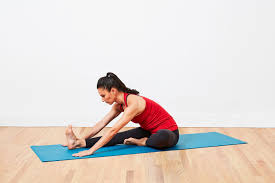
- Legs should be extended in front of the torso while seated, with toes pointing upward.
- Bring the left foot into the right thigh while bending the left knee.
- Slide the hands in the direction of the ankle as you slowly tilt forward from the hips. As much as you can, try to maintain a straight and steady back.
- Expect to feel a stretch, but avoid pushing yourself too much.
- Hold for a number of seconds before standing back up and repeating.
- Change sides.
Supine hamstrings stretch
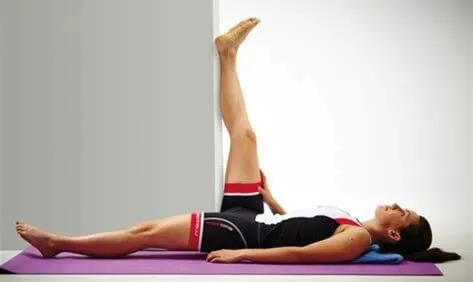
- In a doorway or next to a wall corner, lay flat on your back.
- Elevate one leg such that it rests on the wall, leaving the other leg flat on the floor beyond the border of the wall.
- Without elevating the hips, the rear of the lifted leg should rest as much as possible on the wall. Toes pointed and arms raised to each side of the body.
- Flex the foot of the outstretched leg slightly so that the toes point in the direction of the body. Don’t push yourself until you feel stretched. A strap or band can be used, if necessary, to help with the stretch.
- Before going back to your starting posture and repeating, hold for a few seconds.
- Swap sides.
Seated toe touches
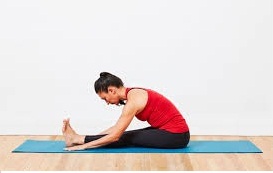
- Healthy Body, Innovative Mind
- Legs should be extended in front of the torso while seated, with toes pointing upward. Don’t stoop to your knees.
- Move the hands in the direction of the ankles as you slowly budge forward from the hips. Keep your back flat and avoid pushing yourself too hard.
- Hold for a number of seconds before standing back up and repeating.
- Change sides.
- Exercises for developing hamstring endurance
- Exercises for the hip extensors and eccentric hamstrings can help with hamstring recovery. Experts advise people to gradually increase their workout regimen, therefore people should follow this advice.
To avoid re-injury, it’s essential to introduce the right workouts at the proper timing and intensity. One should constantly adhere to the strengthening routine recommended by their doctor.
The following hamstring strengthening exercises are suggested:
Hamstring isometrics
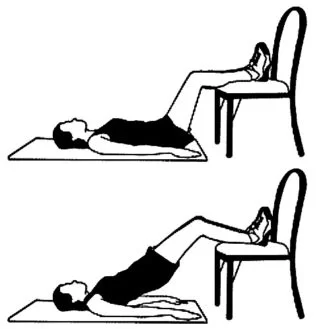
- Place your harmed leg slightly beyond 90 degrees and sit on a chair.
- To gently tighten the hamstring, push the heel firmly into the ground.
- Hold the position for a while.
- On the opposite side, repeat.
Hamstring curls
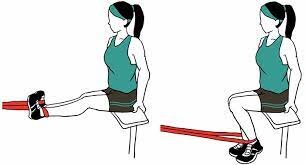
- As you approach a chair while standing, flex your knee to draw your heel towards your tailbone.
- Hold the position for a while.
- Before bending the knee, put the opposite end of a resistance band around the chair leg and the ankle for the intermediate level.
- On the opposite side, repeat.
Chair walks
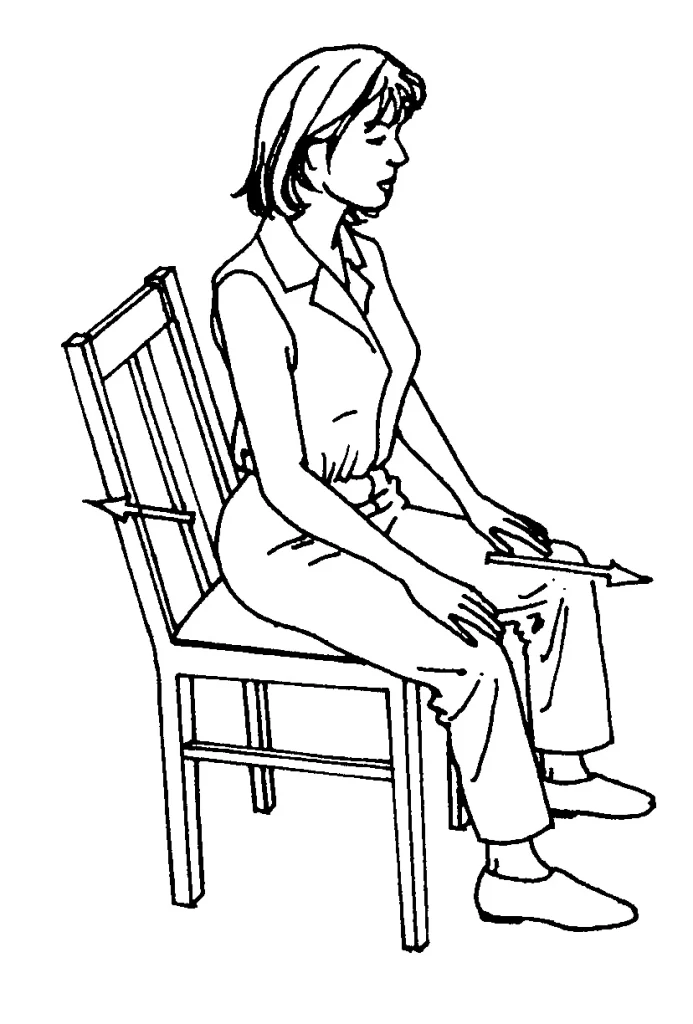
- Sit in a movable office chair on a level surface.
- Extend the leg gradually.
- To move the chair and body forward, hold onto the seat and press your heel into the ground.
- On the opposite side, repeat.
Single-leg floor touches

- Hinge from the hip and gently extend your arm towards the ground while standing on one leg with a slightly bent knee.
- Become upright once more.
- Throughout the workout, maintain a straight torso.
- On the opposite side, repeat.
Straight leg hamstring stretch
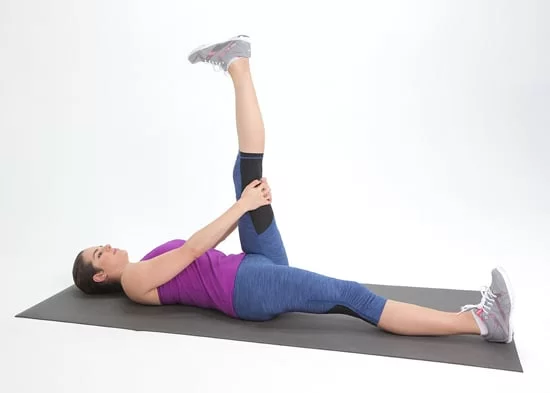
- Begin the stretch and hold slowly. This can be done on the ground, on a bench, or on a table. Don’t push it. Your back thigh should experience a little stretch. Instead of the muscles above the knee, this exercise concentrates on those further up the leg.
Straight leg raise

- Lift the affected leg as high as it will go within the pain-free range while lying on your back on the ground. Next, lower. With this exercise, strive for a more dynamic movement, and as your flexibility increases, aim to gradually straighten the knee.
Standing hamstring curl
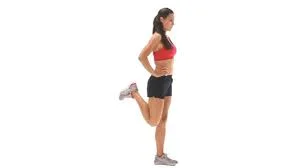
Bring your ankles up to your buttocks by bending your knee. As your confidence grows, up the tempo and repetitions.
Hamstring catches
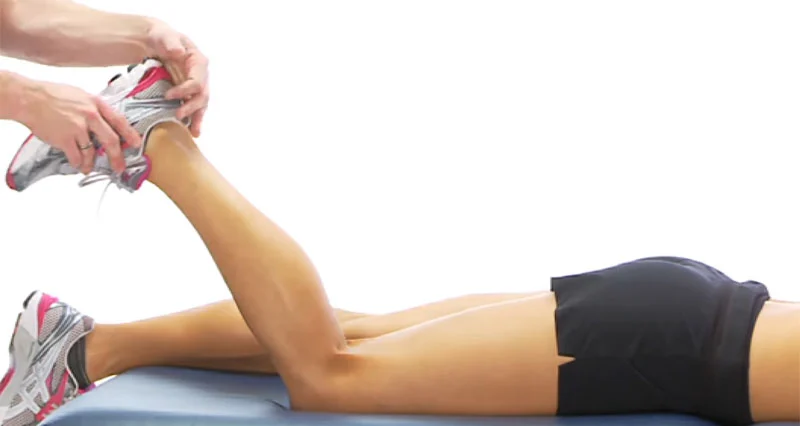
- Allow your bent leg to naturally descend. You may catch the leg before it falls to the ground by using your hamstring muscles. As your leg lowers due to gravity, maintain your calm. To stop the foot from landing, just tighten your hamstrings. With just a very slight impact on dynamic training, this eccentrically engages the hamstring muscles.
- A resistance band’s one end is linked to something fixed or held by a partner, while the other end is fastened to the foot. Using your hamstring muscles, pull your heel into your buttocks.
Single leg bridge
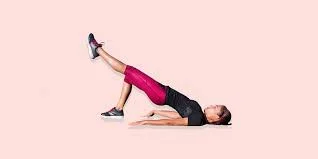
- To exercise your gluteal muscles and hamstrings, lie on your back with one knee bent and press your hips upward.
Lunge with ball
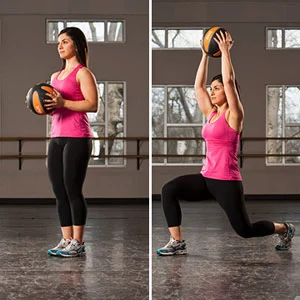
- Exercises to strengthen the hamstrings get harder and more focused on a particular activity. When starting up your regular sports training sessions again, be careful not to push yourself too hard. If you are not used to them, you could be shocked by how challenging some of these workouts are. Check how you are feeling the next day.
Physiotherapy Treatment
Physical therapy and the rehabilitation process’ main goals are to restore a patient’s functions to the greatest extent feasible and/or to enable an athlete to resume competition at a pre-injury level with the least amount of danger of further damage.
Given their high occurrence rate, sluggish recovery, and lingering symptoms, hamstring strain injuries continue to provide a problem for both athletes and medical professionals. Additionally, about a third of these injuries repeat within the first year of a return to sport, with the subsequent injuries frequently being more serious than the initial. A factor for the recovery and prevention of a repeated hamstring strain injury is the employment of a particular and suitable training program to treat hamstring strains. There are several treatments used to treat hamstring strains, but are they all sufficient to stop a recurrence within a year after returning to activity? Numerous research studies have attempted to demonstrate the effects of eccentric workouts, dry needling, deep-stripping massage, etc. on the recovery from hamstring strain.
Following revalidation, the effects to avoid a recurrence of hamstring injury were examined using eccentric strengthening activities at long muscle length as a rehabilitation method. The findings demonstrated a beneficial impact of eccentric strengthening workouts on long muscles.
Eccentric exercise
On the other hand, the research compared progressive agility and trunk stabilization exercises (PATS) with eccentric strengthening activities (STST). The STST group had rehabilitation that included static stretching, isolated hamstring resistance exercises, and ice. For the PATS group, ice was used as a kind of therapy along with progressive agility and trunk stabilization exercises.
The patients who received increasing agility and trunk stabilization during their rehabilitation showed noticeably greater results, according to the research. After a year of returning to the sport, the PATS group saw a much-reduced rate of reinjury (1 of the 13 athletes as opposed to 7 of the 11 in the STST group). In order to encourage athletes who have suffered an acute hamstring strain to return to sports and prevent injury recurrence, a rehabilitation program emphasizing isolated hamstring stretching and strengthening is more effective than one emphasizing progressive agility and trunk stabilization exercises.
Massage
Another treatment used to treat hamstring strain injuries is deep stripping massage. It is typically used alongside with other rehabilitation treatments. To investigate the effects on hamstring length and strength, deep stripping massage (DSMS) either alone or in combination with eccentric resistance was performed. According to these findings, DSMS has no impact on strength but shortens the hamstrings in less than three minutes. Additionally, DSMS combined with eccentric resistance results in greater hamstring flexibility increases than DSMS alone while having no impact on strength.
Dry needling
Although there is a shortage of published research on functional dry needling’s impact on rehabilitation or recurrence of the injury, it has been claimed to be helpful in the management of pain and dysfunction following muscle strains when used in association with an eccentric exercise program.
Kinesiology tape
Kinesiology tape has been shown to have a positive influence on muscular flexibility, which lowers or eliminates the chance of injury. To increase muscular flexibility, kinesiology tape can be used in cooperation with other rehabilitation techniques.
There are several methods and programs that may be used to treat hamstring strain injuries, however, the efficiency of these methods cannot all be proven due to a lack of studies. The most popular and commonly performed plan for the rehabilitation of hamstring strain injuries is hence eccentric exercises. The adoption of this type of program has had positive outcomes. The neglect of the hamstring-bordering muscles is a typical complaint of rehabilitation programs that concentrate on eccentric strength training. It has been proposed that adequate hamstring function during typical athletic activity requires neuromuscular regulation of the lumbopelvic area.
Overview
Exercises for hamstring healing and injury avoidance can be beneficial. Typically, rehabilitation procedures call for a mix of stretching and strengthening exercises.
While severe hamstring strains could necessitate surgery, less serious injuries can be recovered with the right early care and exercises.
Stretching helps address range-of-motion issues, and low-intensity strength training can help with healing. The best rehabilitation program will be recommended by a doctor based on the patient’s individual injury.
FAQs
Should you exercise with a torn hamstring?
It is important that you give your hamstrings the rest they require to fully heal. Resuming training before the injury has had time to heal completely considerably increases your chances of suffering another injury.
How do you heal a torn hamstring fast?
For the first several days or weeks following your accident, follow these steps:
Rest; halt and prevent doing any physically demanding activities.
Ice. Apply ice on your hamstring for 20 minutes, twice or three times daily.
Compression. Swelling and discomfort can be reduced and eased using a compression bandage or wrap.
Elevation.
Is it OK to stretch a torn hamstring?
Stretches and workouts that are easy
A hives-like reaction return to vigorous activity may worsen your injury. A prolonged absence from activity, however, may result in your hamstring muscles contracting and the formation of scar tissue surrounding the tear. After a few days, you should begin doing light hamstring stretches to prevent this.
Is it OK to massage a torn hamstring?
Wait until the scar has fully developed, which often takes one to two weeks. Muscle ruptures (acute stage) – Soft tissue may still be bleeding during the acute stage. Massage could worsen bleeding, cause more tissue injury, and delay healing.
Can a hamstring heal in 5 days?
Most GRADE 1-2 Hamstring Strains will heal in 21 days with excellent therapy. Depending on the location of the tendon affected, GRADE 3 hamstring strains or strains involving the hamstring tendon can last anywhere from 6 to 8 weeks or more.
References
Hamstring Exercises. Sportsinjuryclinic.net. https://www.sportsinjuryclinic.net/sport-injuries/thigh-pain/back-thigh/pulled-hamstring-exercises
What are hamstring rehab exercises? https://www.medicalnewstoday.com/articles/hamstring-rehab-exercises
Hamstring Strain. (n.d.). Physiopedia. https://www.physio-pedia.com/Hamstring_Strain

